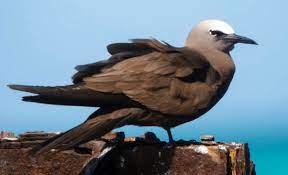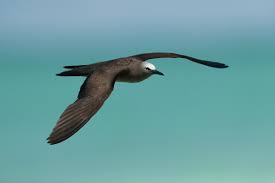The Brown Noddy bird, scientifically known as Anous stolidus, is a captivating avian species that roams the open oceans, enchanting observers with its distinct appearance and behaviors. From its distinctive nodding behavior to its role in marine ecosystems, the Brown Noddy is a remarkable example of avian adaptation. Join us on a journey to explore 24 fascinating facts about these enigmatic birds, shedding light on their habitat, behaviors, and significance in the natural world.

1. Oceanic Dwellers: Brown Noddies are seabirds known for their affinity to open ocean habitats, often found near coastlines and islands.
2. Nodding Greeting: These birds are named for their unique nodding behavior, a communication method often observed between mates.
3. Pioneering Travelers: Brown Noddies are skilled long-distance fliers, known to migrate great distances in search of food and suitable nesting sites.
4. Global Distribution: These birds can be found in various oceans worldwide, from the Atlantic to the Pacific.
5. Minimalist Nests: Brown Noddies are adept at building simple nests using twigs, leaves, and other available materials.
6. Seabird Colonies: These birds are often found nesting in large colonies on remote islands, forming bustling avian communities.
7. Monogamous Bonds: Brown Noddies typically form monogamous pairs during the breeding season, working together to raise their young.
8. Feeding Techniques: These birds are skilled at capturing prey in mid-air by swooping down and catching fish and other small marine creatures.
9. Diving Skills: Brown Noddies use their streamlined bodies and pointed bills to dive into the water and catch prey beneath the surface.
10. Swift Flyers: Their pointed wings and powerful flight muscles enable Brown Noddies to fly swiftly and gracefully over the ocean.
11. White Crown: While their bodies are mostly brown, Brown Noddies have a distinctive white crown that contrasts with their plumage.
12. Vocal Communicators: These birds communicate with a variety of calls, including soft cooing sounds and sharp vocalizations.
13. Pelagic Lifestyle: Brown Noddies spend much of their lives on the open ocean, returning to land primarily for breeding.
14. Efficient Reproduction: Their nesting strategies and reproductive cycles are adapted to the challenges of life on remote islands.
15. Impact on Islands: The presence of nesting Brown Noddies contributes to nutrient cycling and plant growth on their nesting islands.
16. Endurance Fliers: These birds can travel long distances without rest, making use of wind currents to aid their flight.
17. Marine Ecosystem Role: Brown Noddies play a vital role in the oceanic food web by controlling populations of small marine organisms.
18. Coastal Navigators: They are known to follow fishing boats, benefiting from the discarded fish and other marine life.
19. Conservation Considerations: Protecting their nesting islands from human disturbance is essential for their conservation.
20. Adventurous Navigators: Brown Noddies are known to travel far and wide in search of food, often venturing hundreds of kilometers.
21. Research Significance: Studying Brown Noddies provides valuable insights into marine ecology and the health of oceanic ecosystems.
22. Floating Nests: Their nests are built on a variety of surfaces, including rocky ledges and even floating debris.
23. Seafaring Symbols: These birds are emblematic of the vast and mysterious world of the open ocean.
24. Ecotourism Opportunities: Observing Brown Noddies in their natural habitat can contribute to ecotourism efforts, raising awareness about the importance of ocean conservation.



















Add Comment